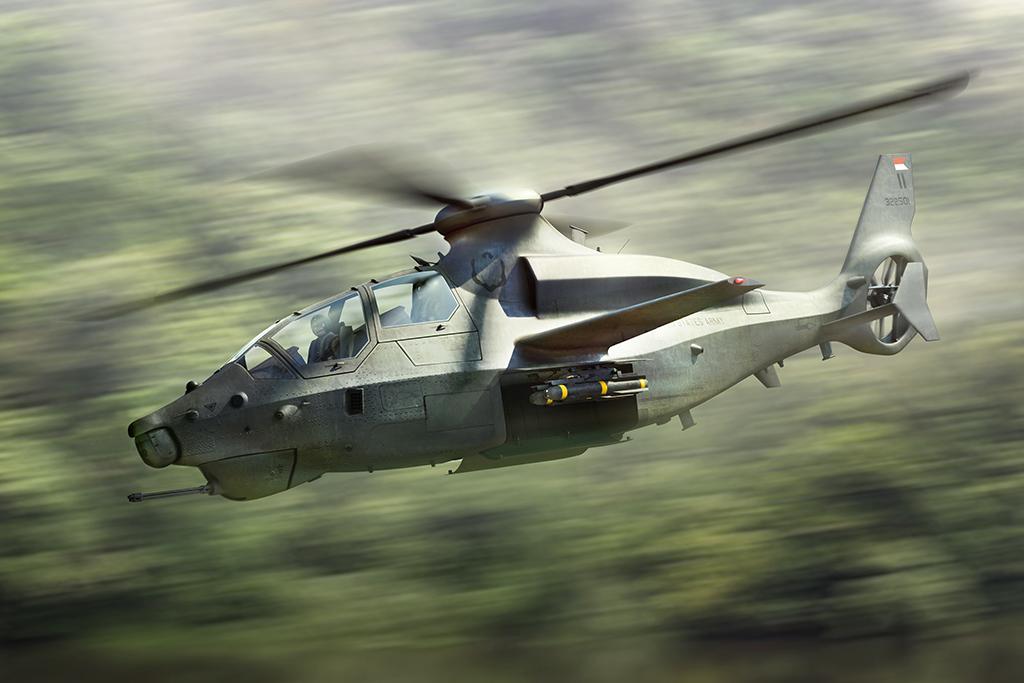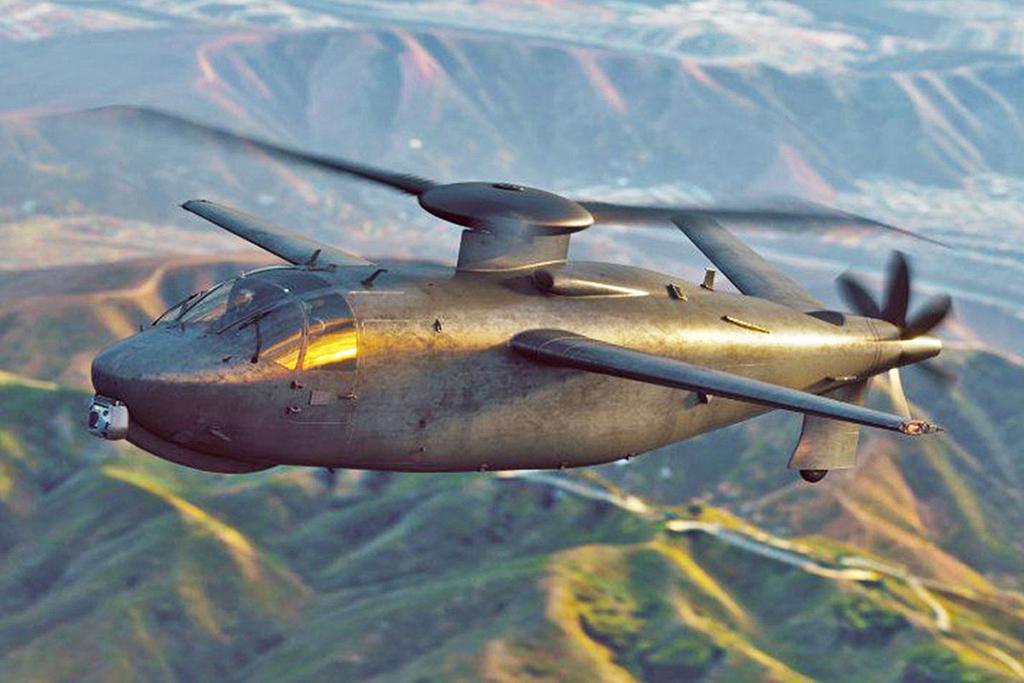
The last of the five competing teams to unveil its design, Boeing has revealed it is offering a thrust-compounded helicopter for the U.S. Army’s Future Attack Reconnaissance Aircraft (FARA) program.
The clean-sheet design is being pitched to win one of two contracts the Army expects to award at the end of March to build FARA prototypes for a competitive flyoff at the end of fiscal 2023.
FARA is intended to replace Boeing AH-64E Apaches now used in the armed reconnaissance role—about half the Army’s fleet—with the first unit scheduled to be equipped in 2028.
Boeing conducted trade studies looking at all possible configurations for an armed scout before selecting a thrust-compounded helicopter, says Shane Openshaw, FARA program manager.

“We did not go into this with our minds made up,” he says, describing a “focused effort” over the past 18 months to define an all-new aircraft that “meets or exceeds all the Army’s requirements,” including a maximum speed of at least 180 kt.
Boeing employed model-based systems engineering for its FARA offering similar to the method the company used to win the Air Force’s T-X program and Navy’s Carrier-Based Aerial Refueling System effort—the company’s T-7 and MQ-25, respectively—said Mark Cherry, vice president and general manager of Phantom Works at Boeing.
“We’re doing that combination of listening to our customer, understanding our own capability, and putting that together into a purpose-built clean sheet design that we believe will meet all the needs the Army is looking for,” Cherry said.
This includes close consideration of both lifecycle and acquisition costs for the new aircraft, Cherry added.

Boeing’s tandem-seat, single-engine design has a hingeless single main rotor with six blades for high solidity, a four-blade tail rotor and a clutched four-blade propeller on the tail for propulsion. Power comes from a single 3,000-shp General Electric T901 and there is no wing.
All five competitors are offering different rotorcraft configurations for FARA. AVX is proposing a coaxial compound helicopter with side-by-wide seating, articulated rotors, wing and ducted fans. Bell is bidding a tandem-seat helicopter with articulated main rotor, canted ducted tail rotor, wing and supplemental power unit. Karem Aircraft’s winged compound helicopter has side-by-side seating, an actively controlled rigid rotor, tilting wing and swiveling tail-rotor/propulsor. Sikorsky is proposing a coaxial rigid-rotor compound helicopter with tail propulsor and side-by-side seating.

Boeing has not partnered with any other vendors for its FARA offering and is instead taking a “One Boeing” approach, Cherry said. “Our other suppliers and other partners are still something that we will build later, but at this point consider it a Boeing-led development,” he said.
Boeing’s high-solidity hingeless rotor provides agility and maneuverability without the high flapping of a fully articulated rotor, Openshaw says. The tail rotor provides maneuverability at low speed and the propeller provides maneuverability at high speed. Weapons are carried internally to minimize drag.
The configuration is reminiscent of Lockheed’s AH-56 Cheyenne, flown in 1967, but smaller because the FARA is limited to a rotor diameter of less than 40 ft. to enable it to fly between buildings in urban combat. Boeing looked at the AH-56 for lessons learned, but the rotor is different, Openshaw says.
The rigid-rotor AH-56 experienced control challenges, but it was not a fly-by-wire helicopter, he notes. Boeing has experience of fly-by-wire from the RAH-66 Comanche developed with Sikorsky and the Sikorsky/Boeing SB-1 Defiant high-speed helicopter demonstrator now in flight testing.

The AH-64 has a four-blade, fully articulated rotor, but Boeing’s experience with hingeless rotors dates back to its YUH-61 entrant in the utility-helicopter competition that produced the Sikorsky UH-60 Black Hawk. Flown in 1973, the YUH-61 had a composite four-blade hingeless rotor based on Boeing’s experience working with MBB on the BO105 light helicopter.
Despite the addition of a propeller, which is driven via clutch mounted aft of the tail rotor gearbox, “we do not see this as an overly complex design,” Cherry says. “The Army has set the industry tough problems with its mandatory requirements and desirements. Every configuration has its pluses and its drawbacks.”
Boeing Phantom Works is leading the FARA bid, working with the company’s AvioniX and Aurora Flight Sciences divisions on the prototype.
“We are not inventing new technologies,” Openshaw says. “We are integrating and improving on mature technologies to meet the challenges of delivering with the risk, schedule and cost [the Army wants]. This is the right way to go.”

